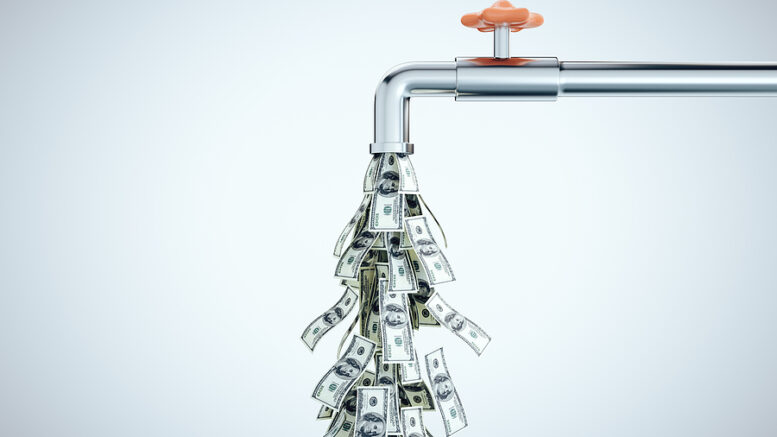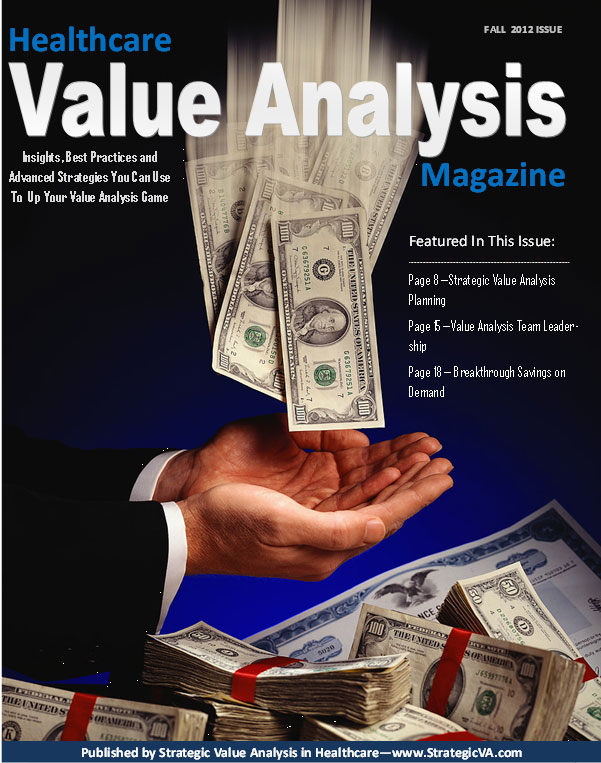“Consumption management is an opportunity to fine tune contracting, vendor service levels, and clinicians’ use patterns to best practice levels.”
Where to Find an Abundance of Savings Opportunities Beyond Price in These Inflationary Times
Let’s face it, inflation, clinical labor shortages, and market conditions are doing a number on our health systems’ bottom lines and forcing organizations to find new and better ways to eke out costs while maintaining quality and outcomes. This is easier said than done. Group purchasing organizations and your own custom contracting are readjusting to the new normal, but inflation has taken away the majority of what I call “home run savings opportunities” that we once had. There are still some singles and doubles with savings that can add up, but they just aren’t what they used to be, nor can they alleviate the hit our health systems’ bottoms lines are taking. None of this is new to anyone in the healthcare industry, we all know what the market conditions are. The big question is, where are we going to get the next major level of savings to start hitting doubles, triples, and even home runs again in the savings department?
Why Savings Beyond Price is More Important than Ever Before
In value analysis and supply chain contracting, our true expertise is in finding the right price and selecting and vetting the right products in our contracts. But once everything is implemented, we then don’t have a mechanism in place to address consumption issues (i.e., the overuse and waste of products and services). Even though you may have the best price in the world, you could be consuming too many of any product per surgery case, per patient day, or per ED visit, and your costs will still be higher.
You likely have consumption management issues going on at your healthcare organization within your procedural, clinical, and non-clinical areas but are doing little or nothing about it. Why? Because you will need to have some form of consumption management reporting in place that not only tells you how much you spend but also correlates to your patient days, procedure cases, lab tests, etc.
The Good News About Consumption Management Is…
The best part about consumption management is that you don’t have to change your contracts or vendors. Instead, you must get inside your existing contracts and customize your products even further or eliminate wasteful use patterns and enhance your policies/procedures to help optimize your consumption.
Fine Tuning Your Supply Chain Instead of Wholesale Changes Just Makes Sense
The way you should be looking at something like consumption management is that it is another opportunity to fine tune your contracting, your vendor service levels, and your clinicians’ use patterns to best practice levels. A simple example is that one health system changed from a very expensive IV catheter product that had all the bells and whistles you could imagine which they used on every patient. This was like using an ICU level catheter for every patient including outpatient throughout their health system. Quite simply, they dialed back the use of the catheters to only ICU areas and perioperative areas and chose a lower cost alternative from their existing vendor’s product line for all other areas. Basically, they were over consuming the feature-rich catheters when instead they needed to have a straightforward middle-of-the-road feature catheter at 46% savings annually. This was hundreds of thousands of dollars annually and no contracts were changed.
Don’t Forget That You Control the Faucet
Another great example of over-consumption is that of linen. Most organizations focus on the price at the pump being the cost per pound to process various linen components, but don’t focus on the other areas that are causing costs to increase. There is no reason to change your linen processing company as that will be a major ordeal and may end up costing you more in the long run. But you do control the amount of linen that is consumed on each floor with your par levels and weighted returns to the linen processor. You can find those incongruencies of use patterns that cause linens to get out of control.
One health system we worked with found that in any given month they had failed to return 10% to 18% of their linen back to their linen processor. Being on a linen rental processing program means that they will have to pay for that lost linen per their contract which is over $310K annually. This has nothing to do with their linen quality or clinical/patient use, it is just due to end-users not putting linen back in the linen collection bins/bags on the various clinical units. They formed a Linen VA Task Force and got to the bottom of the problem. They were then able to reel in their costs and did not have to change one bit of their contract or service levels.
Why is Consumption Management a Challenge?
The reason that consumption management is so challenging today is because we do not have systems in place to track these costs with patient volume centric metrics that will give unquestionable proof that we must address these issues. Doing nothing exacerbates the issue as over-consumption can grow from a $10K increase one month to being $142K in just six months because no one is correcting/optimizing the end user’s patterns. Remember, they are busy taking care of patients, not looking after consumption issues on the clinical units.
Next Steps for Consumption Management
When you start to form your consumption management program you will want to do a few things. First, you will need to make clear to your C-Suite and Supply Chain Leadership that this has nothing to do with price. The objective is to identify the biggest consumption savings opportunities with a solid database driven by patient volume centric reporting. Then, prove that the savings opportunities are real and assist the end users with optimizing their areas on each of the categories that arise. I would suggest forming a Consumption Management Value Analysis Team to focus specifically on this new area as your other teams more than likely have full agendas.
The End Game is Near – Clearing the Board
If you follow all the ideas and strategies in this article, you will finally be at the point of the end game with our healthcare supply chain, or as I call it, “clearing the board.” I use this term when I benchmark our client hospitals and they have minimal major savings opportunities to show because they have been actively addressing their consumption for several years. This, too, can be an obtainable objective for you and your health system but you must formalize a program today which will quickly show major savings that will last for years to come in many different categories.
| About Robert W. Yokl, President of SVAH Solutions |
|---|
| Robert is the President of SVAH Solutions which provides value analysis, clinical supply utilization, and savings validation tools to help healthcare organizations gain the next level of savings beyond price and standardization. https://www.SVAH-Solutions.com https://www.SavingsValidation.com |
Articles you may like:
3 Steps to Fast Tracking Clinical Supply Utilization Savings





